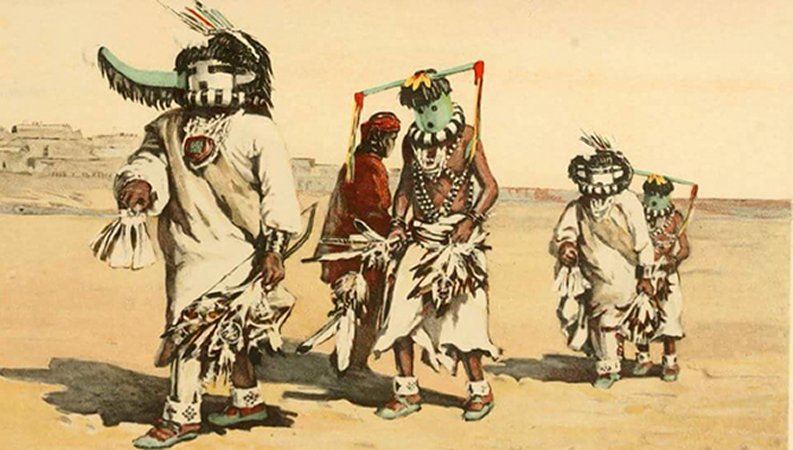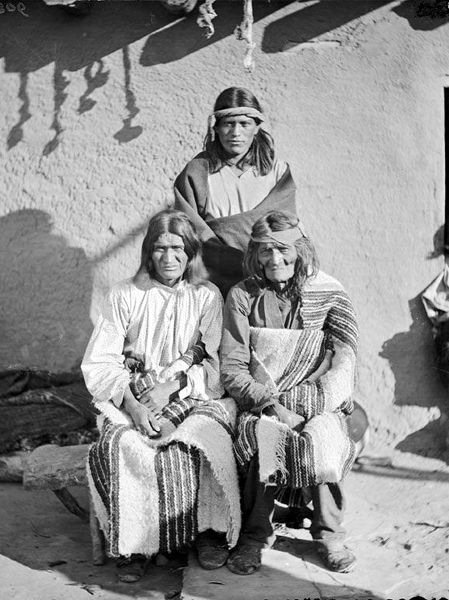
>
Echoes from the Ancient Earth: Zuni Legends and the Soul of America
America, a land of vast landscapes and diverse peoples, is a mosaic woven with countless stories. From the rugged individualism of the frontier to the haunted whispers of colonial towns, its legends paint a vivid picture of a nation forever grappling with its identity. Yet, beneath the more widely known tales of Paul Bunyan and Johnny Appleseed, lies a deeper, more ancient layer of narrative – the rich, profound legends of its Indigenous peoples. Among these, the stories of the Zuni Pueblo stand as a testament to resilience, spiritual depth, and an unbroken connection to the very earth itself.
In the sun-baked plains and mesas of New Mexico, the Zuni people have nurtured a vibrant oral tradition for millennia. Their legends are not mere folklore; they are the bedrock of their culture, their history, their cosmology, and their moral compass. They speak of creation, migration, the sacred balance of life, and the intricate relationship between humanity and the spiritual world. To delve into Zuni legends is to journey into the soul of a people who have survived immense challenges, preserving their unique worldview against the tides of time.

The Zuni, or A:shiwi as they call themselves, are one of the 19 Pueblos of New Mexico, residing in the largest of the state’s 19 sovereign Native American pueblos. Their ancestral roots trace back to the Ancestral Puebloans, builders of the magnificent cliff dwellings and sophisticated communities that dotted the Southwest. For over 1,000 years, Zuni Pueblo, often referred to as Itiwana or "The Middle Place," has been continuously inhabited, making it one of the oldest continuously occupied settlements in North America. This deep historical continuity is intrinsically linked to their legends, which are not static tales but living narratives that evolve with the people, constantly informing their present.
At the heart of Zuni cosmology is the creation story, a complex and beautiful narrative that speaks of emergence from darkness into light. It begins with Awona-wilona, the Maker and Container of All, who existed alone in the void. From his own being, he created the sun, the moon, and the stars. Then, from the primeval waters, he brought forth the Earth Mother (Avonawilona) and the Sky Father (Apoyan Tachi). These two cosmic parents, in turn, birthed the first beings, who lived in a series of dark, subterranean worlds.
The most poignant part of the Zuni creation myth is the journey of humanity’s ancestors, the "Ancient Ones," through four dark cave worlds, guided by the Twin War Gods (Ahayuta and Matsailema). These heroic figures, born from the foam of the primal ocean, played a crucial role in shaping the world and leading the people. They carved paths, battled monsters, and taught the people how to survive. Finally, the ancestors emerged into the Fourth World, the "Daylight World," our current existence, through a sacred sipapu (a hole or portal). This emergence was a transformative process; the people were initially soft, wet, and physically imperfect. The Twin War Gods then dried them, taught them language, ceremonies, and the skills necessary for life on the surface.
This journey of emergence is a powerful metaphor for the Zuni experience – a constant striving for balance, growth, and understanding. It underscores the belief that humanity is part of a larger, interconnected cosmos, with a responsibility to maintain harmony with all living things. As a Zuni elder might express, "Our emergence is not just a story of the past; it is the story of our continuous becoming, our constant striving for balance and light."
The Zuni reverence for the land is another central theme, deeply embedded in their legends. "Itiwana," The Middle Place, is not just a geographical location but a spiritual center, believed to be the navel of the world, a place of profound power and connection. The Zuni landscape itself is alive with stories – every mesa, every rock formation, every stream holds a piece of their history and mythology. Petroglyphs carved into ancient stones depict figures and symbols from their legends, serving as enduring reminders of their ancestral narratives.
Agriculture, particularly the cultivation of corn, is sacred to the Zuni, and their legends reflect this. The Corn Maidens, beautiful and benevolent spirits, are central figures, representing sustenance, fertility, and the life-giving power of corn. Stories tell of how the Corn Maidens, after initially being mistreated, briefly departed, causing famine. It was through the people’s repentance and proper ceremonial appeals that the Maidens returned, ensuring the survival and prosperity of the Zuni. This narrative reinforces the importance of respect, reciprocity, and the proper observance of rituals for the well-being of the community.
Perhaps the most visually striking and spiritually significant aspect of Zuni ceremonial life, deeply rooted in their legends, are the Kokko (often referred to by the broader term "Kachina" in other Pueblo cultures). The Kokko are spirit beings, intermediaries between humans and the gods, who bring blessings, rain, and health. They are embodied by masked dancers during elaborate ceremonies held throughout the year, particularly during the winter solstice and summer growing seasons. Each Kokko has a distinct appearance, song, and purpose, representing various aspects of nature, ancestors, or specific powers.
The most famous of these ceremonies is the Shalako, a breathtaking winter ritual held annually, often in late November or early December. It features towering Kokko figures, sometimes over ten feet tall, who bless newly built homes and pray for universal well-being. The Shalako ceremony is a profound demonstration of Zuni spiritual life, a vibrant, living connection to their ancient legends, bringing the spirit world directly into the community. It’s a powerful reminder that these are not just stories from a dusty past, but active, celebrated traditions that shape the present.

The journalistic lens on Zuni legends reveals not only their beauty but also their enduring relevance in the modern world. In an era of globalization and cultural homogenization, the Zuni people face the challenge of preserving their unique language (a language isolate, distinct from other Pueblo languages) and oral traditions. Yet, their commitment is unwavering. Elders continue to pass down stories to younger generations, language immersion programs are active, and cultural institutions like the A:shiwi A:wan Museum and Heritage Center work tirelessly to document and celebrate their heritage.
The Zuni have also become leading advocates for cultural preservation and repatriation of sacred objects, asserting their sovereignty and guardianship over their heritage. Their legends provide the framework for these efforts, underscoring their inherent right to protect and define their own cultural narrative. As cultural historian T.J. Ferguson once noted about the Zuni, "Their cultural resilience and integrity is truly remarkable, reflecting a deep-seated commitment to their traditional ways."
In conclusion, the legends of the Zuni Pueblo offer a profound window into a worldview deeply connected to land, spirit, and community. They are not merely quaint tales but vital, living narratives that encapsulate thousands of years of wisdom, resilience, and spiritual insight. They speak of universal themes – creation, struggle, survival, and the enduring human quest for meaning. As we explore the vast tapestry of American legends, it is crucial to recognize and honor these ancient voices from "The Middle Place." They remind us that the soul of America is not solely forged in modern mythologies, but also in the deep, resonant echoes from the ancient earth, whispered down through generations by people who understand that stories are, ultimately, the most powerful way we make sense of ourselves and our place in the cosmos.


